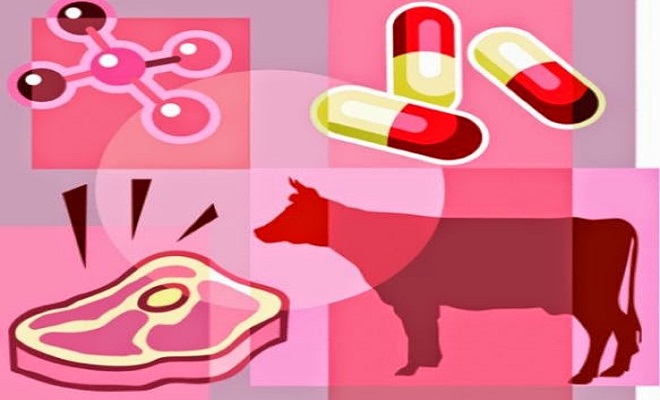 Activist Post
Activist Post
Health
Congressional Bill to Get Key Antibiotics Out of Livestock Feed
by Catherine J. Frompovich, Activist Post:
The only microbiologist in the U.S. Congress, Congresswoman Louise Slaughter (D-NY) has introduced a bill, The Preservation of Antibiotics for Medical Treatment Act (PAMTA) to impede the apparent abuse of animal husbandry using certain medically important antibiotics to fatten cattle for market or in animal feed as normal ‘supplementation’.
According to Rep. Slaughter,
My legislation would save eight critical classes of antibiotics from being routinely fed to healthy animals and would reserve them only for sick humans and sick animals. Right now, we are allowing the greatest medical advancement of the 20th century to be frittered away, in part because it’s cheaper for factory farms to feed these critical drugs to animals rather than clean up the deplorable conditions on the farm. [CJF emphasis added]
Nice work, if you can accomplish it. Probably, Big CAFO, or “Concentrated Animal Feeding Operations,” lobbyists will be all over this one to prevent it from becoming law. However, there’s something that comes to this writer’s mind about antibiotics in general and which I ask the honorable Congressperson from New York to address: “How come so many antibiotics also are allowed to be put into vaccines given to infants, toddlers, teens, and adults?”
Since Rep. Slaughter is a microbiologist, she ought to be the first one asking pertinent questions of the FDA regarding antibiotics in vaccines, plus all the other chemical crap like neurotoxins, especially Thimerosal and aluminum, plus formaldehyde, polysorbate 80, which she really should know how dangerous that is, and a laundry list of ‘ingredients’, including human diploid cells that just may be involved negatively with homologous recombination.
Getting back to her apparent reasons for the PAMTA bill, Slaughter’s correct insofar as sub-therapeutic levels and uses of antibiotics used to treat human diseases contribute to the widespread promotion of drug-resistant pathogens not only in humans, but in livestock too. Factory farming is the biggest offender and it needs to clean up its act both figuratively and literally.
So, what are the biggest disease-resistant threats according to the CDC? [1]
Clostridium Difficile; Carbapenem-Resistant Enterobacteriaceae; Neisseria-gonorrhoeae are classified as the most serious threats.
Then there are serious threats, which include:
- Drug-Resistant Campylobacter collapsed
- Fluconazole-Resistant Candida collapsed
- Extended Spectrum Enterobacteriaceae (ESBL) collapsed
- Vancomycin-Resistant Enterococcus (VRE) collapsed
- Multidrug-Resistant Pseudomonas Aeruginosa collapsed
- Drug-Resistant Non-Typhoidal Salmonella collapsed
- Drug-Resistant Salmonella Serotype Typhi collapsed
- Drug-Resistant Shigella collapsed
- Methicillin-Resistant Staphylococcus Aureus (MRSA) collapsed
- Drug-Resistant Streptococcus Pneumoniae collapsed
- Drug-Resistant Tuberculosis
And microorganisms that are less of a threat because theirantibiotic resistance is low:
- Vancomycin-Resistant Staphylococcus Aureus collapsed
- Erythromycin-Resistant Group A Streptococcus collapsed
- Clindamycin-Resistant Group B Streptococcus
For readers and those who raise animals as food, who are interested in the FDA’s 2003 Guidance for Industry, I refer you to this report, “Evaluating the Safety of Antimicrobial New Animal Drugs with Regard to Their Microbiological Effects on Bacteria of Human Health Concern.” Readers will note “non-binding recommendations”!
In December of 2013 the FDA issued another report, “Phasing Out Certain Antibiotics Use in Farm Animals” that, again, had Voluntary compliance! Take a read on this:
Flynn explains that the final guidance document made participation voluntary because it is the fastest, most efficient way to make these changes. FDA has been working with associations that include those representing drug companies, the feed industry, producers of beef, pork and turkey, as well as veterinarians and consumer groups.
“Based on our outreach, we have every reason to believe that animal pharmaceutical companies will support us in this effort,” says Michael R. Taylor, FDA’s deputy commissioner for foods and veterinary medicine. [2] [CJF emphasis added]
Of course, they will, just like before—nada! Does everyone know that Michael R. Taylor was “vice president for public policy [at] Monsanto…”? [3] I guess Taylor has not been able to persuade very many pharmaceutical companies or CAFOs otherwise, so that’s why Rep. Slaughter had to introduce her bill, for which I congratulate her.
All I can say to Rep. Slaughter is “Good luck” in getting this bill past vested interests’ lobbyists and their generous gifting to member of Congress. I think you and your bill may have a tough row to hoe, but thanks for having your heart in the right place.
References:
[1] http://www.cdc.gov/drugresistance/biggest_threats.html
[2] http://www.fda.gov/ForConsumers/ConsumerUpdates/ucm378100.htm
[3] http://www.fda.gov/AboutFDA/CentersOffices/OfficeofFoods/ucm196721.htm












